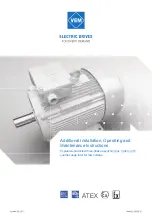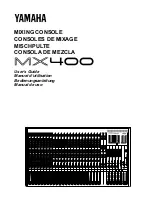
Lead
• When working with lead or lead-containing compounds, avoid direct contact to the skin and do not
inhale lead vapors.
• Prevent the buildup of white powder of lead.
• Switch on fume extraction system.
• After coming into contact with lead or lead-containing materials, wash your hands!
Acids and alkaline solutions
• When working with acids and alkalis, wear protective goggles or face mask, gloves and protective
clothing.
• If such solutions are spilled onto clothing, remove the affected clothing immediately!
• Rinse injured parts of the body thoroughly with clean water!
• Rinse eyes immediately with eyedrops or clean mains water!
Paints, enamels and varnishes
• When carrying out painting work outside the spray stands provided with fume extraction systems, en‐
sure that the area is well ventilated. Make sure that neighboring work areas are not impaired.
• No open flames!
• No smoking!
• Observe all fire-prevention regulations!
• Always wear a mask providing protection against paint and solvent vapors!
Liquid nitrogen
• Store liquid nitrogen only in small quantities and always in specified containers without fixed covers.
• Avoid body contact (eyes, hands). Contact of this nature would cause frostbite and numbing.
• Wear protective clothing, protective gloves, closed shoes and protective goggles / safety mask!
• Make sure that working area is well ventilated. Suffocation will result at 88% contamination of breath‐
ing air with nitrogen.
• Take great care not to subject containers, fittings and tools to impact or shock.
Compressed air
Compressed air is air compressed at excess pressure and is stored in tanks from which it can be extract‐
ed.
The pressure at which the air is kept can be read off at pressure gauges which must be connected to the
compressed air tanks and the compressed air lines.
When working with compressed air, safety precautions must be constantly observed:
• Pay special attention to the pressure level in the compressed air network and pressure vessel!
• Connecting devices and equipment must either be assembled for this pressure, or, if the permitted
pressure for the connecting elements is lower than the pressure required, a pressure reducing valve
and safety valve (set to permitted pressure) must form an intermediate connection. Hose couplings
and connections must be securely attached!
• Always wear protective goggles when blowing off tools or extracting chips!
• The snout of the air nozzle is provided with a protective disk (e.g. rubber disk), which prevents air‐
borne particles being reflected and thereby prevents injury to eyes.
• First shut off compressed air lines before compressed air equipment is disconnected from the supply
line, or before equipment or tool is to be replaced!
• Unauthorized use of compressed air, e.g. forcing flammable liquids (danger class AI, AII and B) out of
containers, results in a risk of explosion!
• Forcing compressed air into thin-walled containers (e.g. sheet metal, plastic, glass) for drying purpos‐
es or to check for leaks will result in a risk of bursting!
• Blowing dirt from soiled clothes while still worn is prohibited!
M015700/06E 2012-06 | Safety | 13
TIM-ID: 0000002828 - 005














































